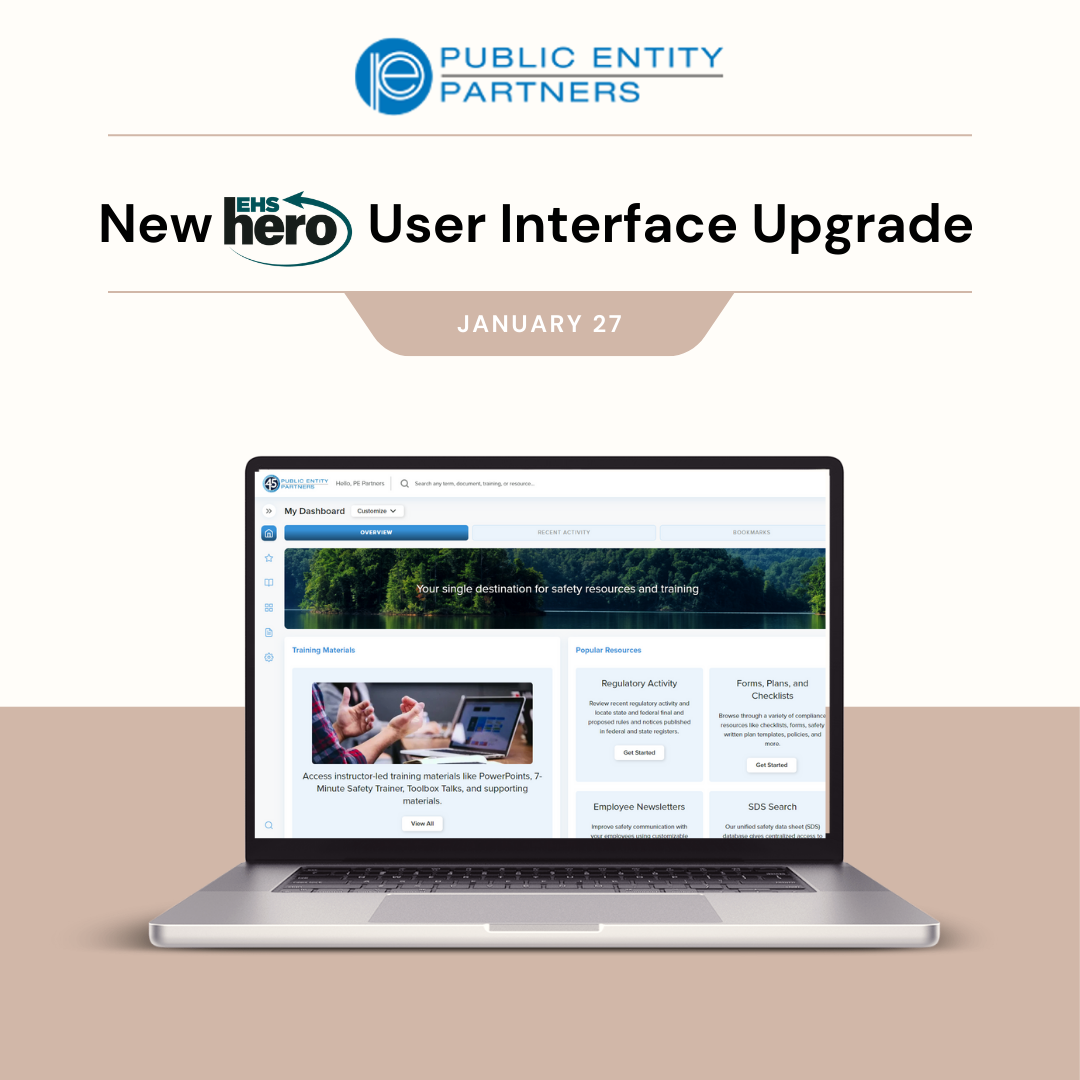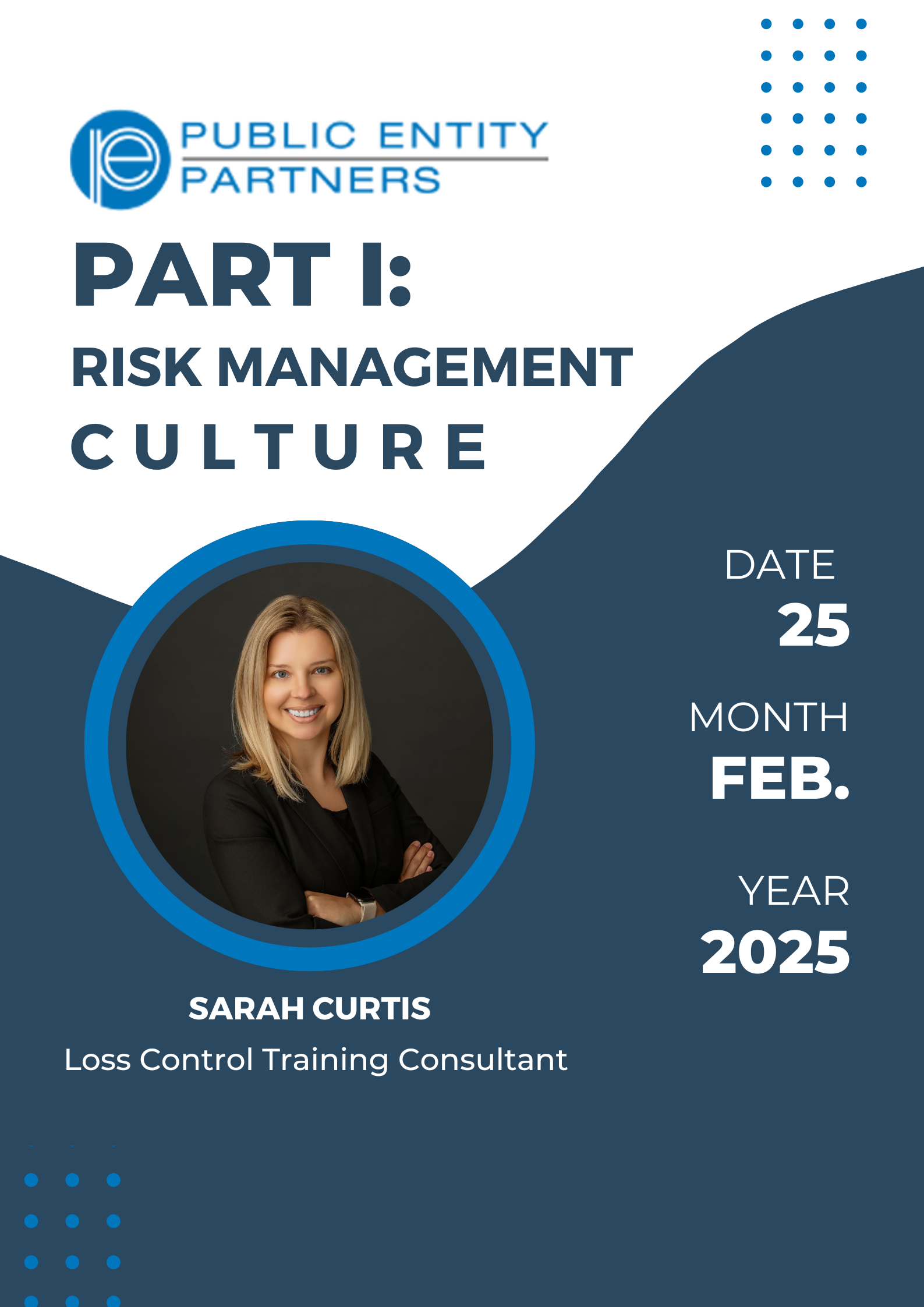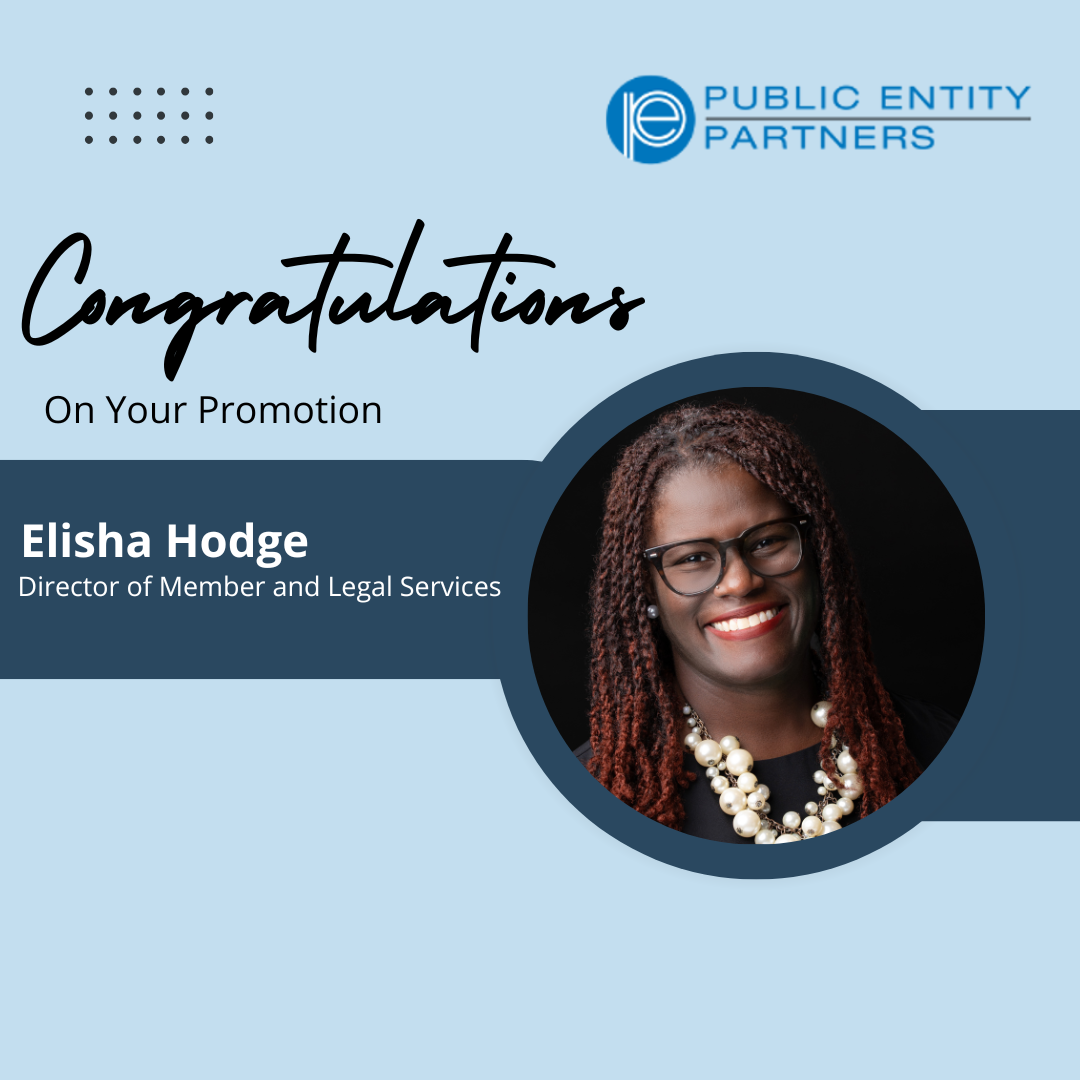PartnersNews - January 2025

In this month's issue:
- Partnering for Success Webinar Series: Property Insurance Valuation — What Does 2025 Have in Store for Us?
- New EHS Hero User Interface Upgrade
- Virtual Training Series — Navigating Risk: A Holistic Approach to Risk Management
- Elisha Hodge Promoted to Director of Member and Legal Services
- Cold Weather Work Environments
- The Importance of Certificates of Insurance
PARTNERING FOR SUCCESS WEBINAR SERIES:
Property Valuation — What Does 2025 Have in Store for Us?
Join us on Wednesday, Feb. 12, for our next webinar when Murray Huber with Huber & Lamb Appraisal Group Inc. will touch on the following topics:
- The differences between replacement cost (RC) and actual cash value (ACV)
- On-site inspection property condition issues
- The pros and cons of "gifted" properties
- Market trends for 2025
Don't miss out on the opportunity to gain valuable insights and stay ahead in the evolving world of property insurance.
When: Wednesday, Feb. 12 - 1:00 pm CST/2:00 pm EST. To register, please click here.
For more information on the Partnering for Success Webinar Series, contact:
Amber Turner
615-371-6001
NEW EHS HERO USER INTERFACE UPGRADE
At Public Entity Partners, we are committed to providing our members with the best tools and resources to support their safety initiatives. One of these tools is our EHS Hero.
Whether you’re looking for a recent regulatory change, need to tweak a safety plan or are planning for safety, EHS Hero (Environmental Health & Safety) has you covered. This platform can perform the regulatory research and prep work for you.
Our EHS Hero interface has been upgraded and will help take your program to the next level.
Here’s what you can expect from the new user experience:
- A modern, more streamlined design
- Easier vertical navigation
- A superpowered search center
- In-app content update notifications
- New curated content collections and the ability to create your own
- Helpful QuickLinks to centralize important parts of your workflow
- Bulk downloads for training collections to save you time
These improvements are aimed at making your experience more efficient and productive than ever before. The new user interface will officially launch on Monday, Jan. 27.
Please note that members with existing accounts will be redirected to the new experience automatically, though you might be prompted to reset your password. Please also note that bookmarked content will not be saved, but Regulatory Analysis Chart Builder saved charts will be retained.
When you log in on Jan. 27, you will have the option of taking a guided tour to help you find important tools and content that may have moved.
If you can’t find what you are looking for, you can use the superpowered search center at the top of your screen or click the question mark icon at the bottom of your application to submit feedback. A BLR team member will get in touch with you right away.
We’re confident this upgrade will improve your EHS research and management, and we’re excited for you to experience the difference.
To sign up for EHS Hero, please contact Amber Turner at ATurner@PEpartners.org or your Member Services representative.
VIRTUAL TRAINING SERIES — NAVIGATING RISK: A HOLISTIC APPROACH TO RISK MANAGEMENT
In today’s fast-paced environment, siloed approaches to risk management often fall short, leaving organizations vulnerable and unable to effectively identify and mitigate risks.
This Public Entity Partners’ virtual training series will delve into the foundations of risk management using a holistic approach. We will explore the most common exposures public entities face and present a framework to reduce liability, workplace injuries and property damage. By adopting the enterprise risk management framework, participants will learn how to implement a cohesive strategy that enhances efficiency, minimizes losses and maximizes your entity’s mission.
Mark your calendars and join us for an engaging training series designed to enhance your risk management skills and knowledge, led by Public Entity Partners’ loss control consultants.
This virtual training series will consist of four sessions:
WINTER 2025 – Feb. 25
Part 1: Risk Management Culture
Many organizations are moving toward an enterprise risk management plan that encompasses a more comprehensive approach to risk management. While these plans are diverse and can often be organization- or industry-specific, they all have one thing in common: risk management must be embedded in organizational culture.
In this session, we will discuss solutions for weaving loss prevention strategies into the culture of an organization and engaging your employees in the process.
SPRING 2025 – May 20
Part 2: Property Conservation: Protecting Your Assets
Reducing property losses is an important aspect of any risk management plan. Focusing on the most common property risks, this session will offer guidance for minimizing risk and protecting public assets. We will discuss best practices in property conservation using a holistic approach to loss prevention, accountability and communication.
SUMMER 2025 – Aug. 19
Part 3: Liability: Reducing Your Exposure
Public entities face unique liability exposures due to the nature of the services they provide. In this session, we will take a deep dive into some of the most common exposures, including general liability, employment practices liability and law enforcement liability. We will explore policies and best practices for mitigating these risks and minimizing the impact of a loss.
FALL 2025 – Nov. 4
Part 4: Workers’ Compensation: Protecting Your Employees and Operations
Considering the risks associated with the numerous jobs it takes to run a public entity, most local governments will have employees who experience work-related injuries at some point. While employee safety and mitigation of risks should be of top concern, it is also important to have a plan in place should a work-related injury occur.
In this session, we will provide you with the steps to properly manage your workers’ compensation claims, and ensure the best possible outcomes for your injured employee and your organization. In addition, we will share resources available to you as you navigate the workers’ compensation process.
To register for this virtual training series, please click here.
ELISHA HODGE PROMOTED TO DIRECTOR OF MEMBER AND LEGAL SERVICES
Public Entity Partners is pleased to announce that Elisha Hodge has been promoted to Director of Member and Legal Services.
In her previous role as a Legal Services Consultant, she supported internal and external stakeholders by providing advice, support and research on day-to-day legal matters. She also developed and taught courses to strengthen and improve risk management. In her new role, she will continue to provide legal support and training in addition to overseeing Member Services efforts.
A graduate of the University of Memphis Cecil C. Humphreys School of Law, Ms. Hodge has been a licensed attorney for more than 20 years. Prior to joining PE Partners, she was employed by the University of Tennessee Municipal Technical Advisory Service (MTAS) for nine years, serving as the Legal Consultant assigned to Middle and Southeast Tennessee. Before joining MTAS, she served as the Open Records Counsel for the State of Tennessee through the Office of the Comptroller of the Treasury.
In addition, Ms. Hodge received mediation training from Lipscomb University, is a Certified Public Manager (CPM) through the Naifeh Center for Effective Leadership and is a Qualified Administrator (QA) through the Intercultural Development Inventory.
Ms. Hodge grew up in Shelbyville and currently lives in Murfreesboro. When she’s not busy with her two sons, Isaiah and Zachariah, and niece Jayln, she enjoys spending time with extended family and friends, along with traveling and shopping.
“My entire career has been devoted to public service,” said Ms. Hodge. “I am passionate about helping public employees perform at their highest levels so that our communities operate at the highest level. Working at PEP allows me to continue doing meaningful work, and for that I am grateful."
The relationships Ms. Hodge has developed and cultivated with our members and sister organizations are invaluable, and we are thankful for her insight and expertise.
Please join us in congratulating Elisha on her promotion!
COLD WEATHER WORK ENVIRONMENTS
Everyone knows how uncomfortable cold weather can be — particularly if you work outdoors.
Many Public Entity Partners’ members have employees who cannot avoid working in cold conditions. These jobs include construction, police, fire, emergency responders, trucking, road repair, utility repair and many more.
The biggest health risk of being overexposed to cold is hypothermia — or a drop in the body’s temperature below 95 degrees. This usually occurs in temperatures between 30 and 50 degrees, but it can also happen in temperatures as high as 65 degrees. Other risks include frostbite, dehydration, chilblains and indirect reactions due to pre-existing conditions, such as arthritis or asthma.
Employers must ensure their employees take appropriate precautions to avoid workplace injuries during cold conditions.
Cold weather worker protection includes:
- Using insulated tools so skin does not come into contact with cold metals;
- Wearing hats, hoods and masks to help retain body heat since 40% of heat loss occurs through the head;
- Dressing in layers and making sure the outer layer is wind- and water-resistant;
- Protecting hands by wearing gloves (workers who need more hand flexibility can consider fingerless gloves when necessary);
- Wearing waterproof insulated boots over wool socks;
- Having a change of clothing on hand in case clothing gets wet while working or personal protective equipment (PPE) becomes damaged.
Working in cold conditions presents a variety of hazards, including wind and dampness, that require numerous protection measures. If you don’t have a plan for cold stress prevention, now is the time to put one together. EHS Hero™ has a template to assist you in creating this plan.
To access the EHS Hero safety plan resources, contact Amber Turner at ATurner@PEpartners.org.
THE IMPORTANCE OF CERTIFICATES OF INSURANCE
Since PE Partners' underwriting team consistently receives inquiries from members pertaining to certificates of insurance, we prepared a list of the most frequently asked questions and their answers.
What is a certificate of insurance (COI)?
A COI is proof of coverage provided to you by a third-party vendor or contractor showing limits of liability insurance for work performed or services rendered through a written agreement with you.
Why should you require them?
To verify that the vendor or third-party contractor is carrying insurance to cover them in the event of a claim that results from their actions while working for you.
When are they needed?
Any time you:
- Hire a contractor to perform a service.
- Hire a vendor to participate in a sponsored event, such as a festival or function, or if an event participant conducts any activity that may cause increased exposure for your entity.
- Allow a private citizen to host an event on your property that is not sponsored by you.
When are they needed?
- All certificates collected from vendors and contractors should provide liability limits that are at least $1M per occurrence with a $1M aggregate limit. This should be increased according to the specific size of the contract/event. Be sure to include Liquor Liability if alcohol is involved.
- Certificates should name you as an additional insured on the vendor’s or contractor’s policy. This is to cover you for the actions of the vendor while working on your behalf.
- If you are not listed as an additional insured on the certificate of insurance, the risk has not been transferred to the contractor.
- If possible, require a waiver of subrogation in your favor. This will prevent the contractor’s insurance provider from pursuing damages against you through subrogation after a claim is settled.
Why do I have to provide one?
- Sometimes you enter contracts with third parties that require you to provide a certificate of insurance. Basically, the shoe is on the other foot.
- Typical scenarios where this is required are when you rent equipment, lease property from a third party or enter into a railroad agreement.
What does the law say?
- Governmental entities are restricted to the liability limits provided within the Tennessee Governmental Tort Liability Act (TGTLA).
- These limits are $300,000 per person / $700,000 per accident for bodily injury and $100,000 for property damage.
- The TGTLA also prohibits governmental entities from assuming the liability of a third party through indemnification and hold harmless agreements.
As always, we encourage you to have your city attorney review any and all contracts. In addition, always review all policy terms, conditions and exclusions.
For additional information on certificates of insurance, please click here.
If you have any questions about certificates of insurance or any other coverage questions, please reach out to your member services representative or your underwriter.





